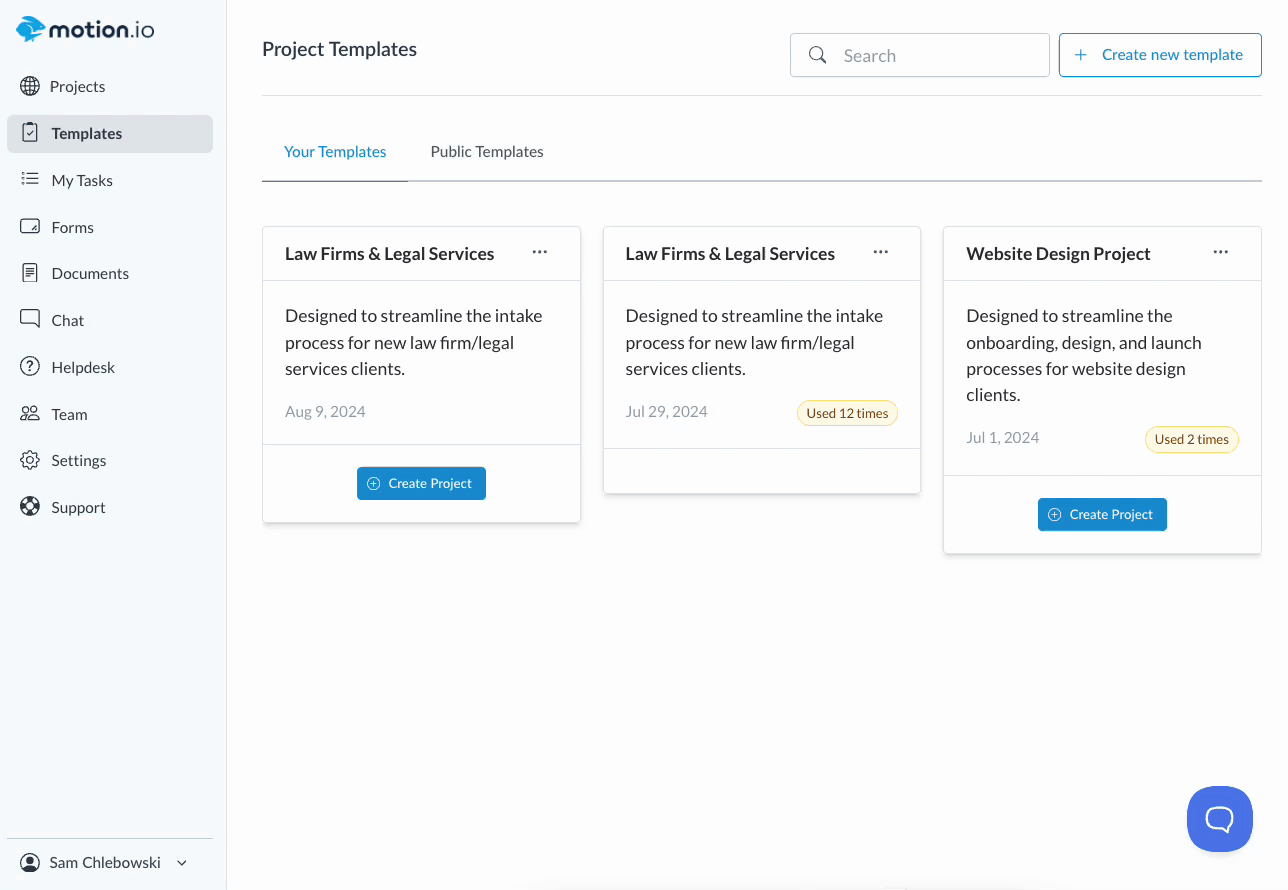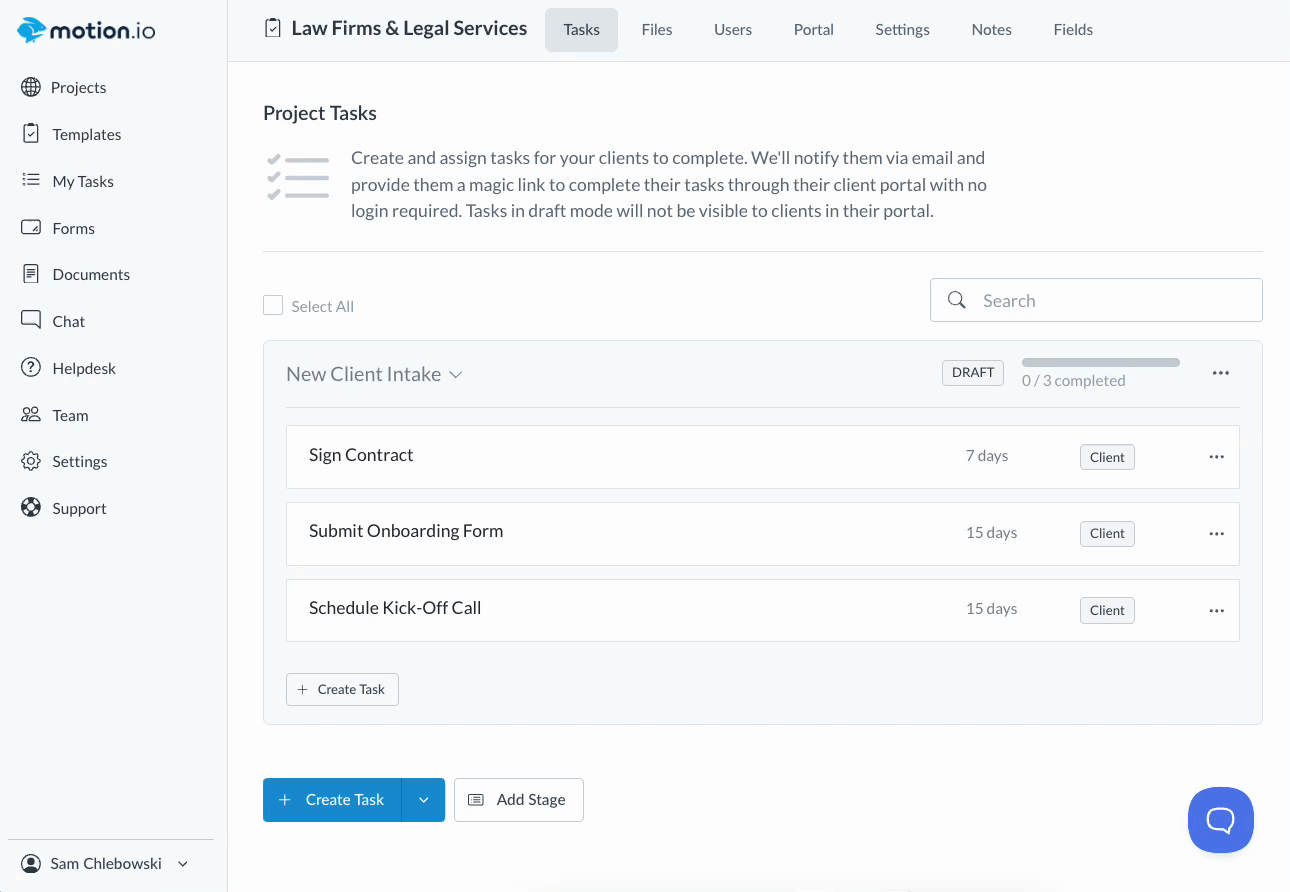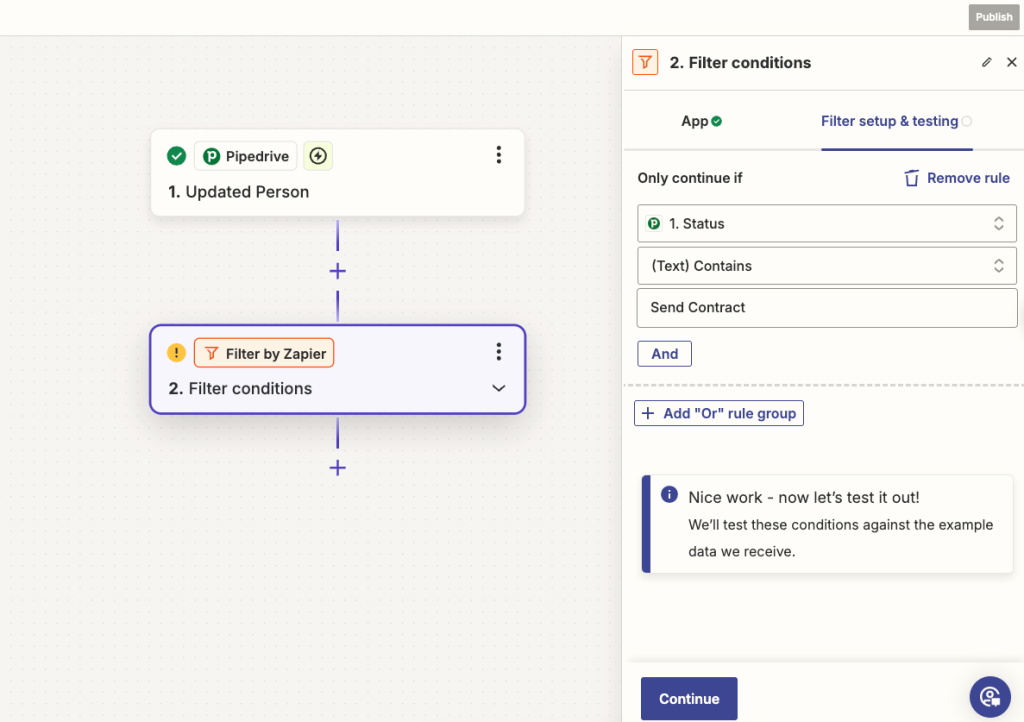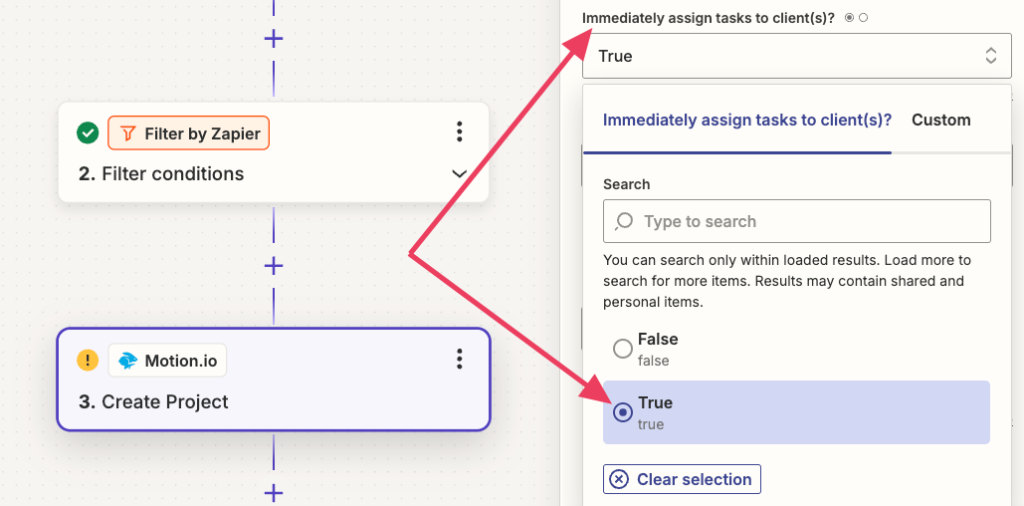Using Motion.io’s Electronic Document signing, you can turn your client portals into sales spaces that automatically kick off projects once a contract is signed.
This guide will explain how to set up a workflow that automatically invites clients to a portal where they can sign and submit an initial contract or agreement after a contact is updated in your CRM.
Before Getting Started
In order to set up this workflow, there a few things you’ll need to create first:
- Zapier Account – If you’re new to Zapier, it’s an automation platform that enables you to seamlessly connect thousands of different software tools in automated workflows called “Zaps.” If you haven’t signed up for Zapier yet, click here.
- Motion.io Document – One of the first steps in the setup process of this workflow is to create a “Attach Documents” task in one of your Motion.io templates. Before attaching documents to tasks, you must create the document(s) you’ll use.
Click here to learn more about creating electronically signable documents and contracts in Motion.io.
Motion.io Template Setup
The first half of this guide details the process for setting up a Motion.io template, which the Zapier workflow covered in the second half will use to auto-create projects.
Step 1: Create a Document Task in Your Motion.io Template
In your Motion.io account, open the editor for the template you want to use to auto-create new projects. Click the button to create a new task, then, under “Task Options,” click the toggle for “Attach Documents.” In the modal that opens, select the document you’d like to attach.
After selecting your document, the modal will update to ask you to specify who should be responsible for filling out the fields. If the document you are using requires you or another team member to countersign it, select that team member from the dropdown under “Team.” Once you have entered all other details of your task (for example, a title, description, and due date), click “Save.”

Because you cannot add clients to templates in Motion.io, you’ll notice the “Client” field is grayed out. No need to worry; a later step of this workflow will auto-assign the client fields.
Step 2: Add a Motion.io Automation to Activate the Task
In cases where projects can not officially kick off until your client completes a document, they must have immediate access to sign and submit your contract or agreement as soon as you invite them to their portal.

To do this, click the “Lightning Bolt” icon to open the automation modal for the “Attach Documents” task you created in Step 1. In the modal, select “Activate this task” as the action and “The project is created” as the trigger.
Step 3: Set Up Additional Automations (Optional)
While optional, you can add additional Motion.io automations to your template to activate future tasks in the project this workflow will create.
Examples of tasks you can set up additional automations for include:
- Requesting clients upload files or complete an onboarding form
- Prompting clients to schedule a kick-off call or pay their first invoice
- Instructing your team to complete other internal tasks related to onboarding
Click here for a detailed guide on how to create and use Motion.io’s native automations.
Zapier Setup
With your Motion.io template ready to use, you’ll now log in to your Zapier account to set up the final pieces of this workflow.
Step 4: Create a New Zap and Specify a Trigger Event
In your Zapier account, click the button to create a new Zap. While this Zap will feature an action that automatically creates a Motion.io project from the template, you’ll need to specify a separate event to trigger it.
To create a trigger event, click the option at the top of your Zap and search for the app you want to use. The example Zapier workflow in this guide triggers when a person’s status in Pipedrive (CRM software) updates to “Send Contract.”

The trigger example shown in this guide is just one of thousands of options available in Zapier. In addition to using virtually any other CRM, other trigger options include a specific form being submitted or when a message is sent to a particular Slack Channel. Click here to see even more examples.
Step 5: Add a Filter Action to Your Zap (Optional)
If the trigger you are using to start a Zap fires for a wide variety of updates and you’d like to ensure it only fires for a specific update, it is sometimes necessary to add a filter.
To add a filter to a Zap, click Zapier’s “Filter” action and specify the parameters that will allow future steps in the workflow to fire.

The filter example in this guide is configured so that future steps will only fire if a person’s status is updated to “Send Contract.”
Step 6: Add an Action to “Create Project” in Motion.io
For the final step of your Zapier workflow, click the button to add a new action and search for “Motion.io” in the modal. Then, select “Create Project” under “App & Event” and navigate to the “Action” tab to map your fields.

There are numerous ways you can map fields in the “Create Project” action, but the above screenshot showcases a typical example, with fields mapped as follows:
- In the “Template” field, “Legal Services” is selected as the template this Zap will automatically create new projects from.
- The fields for “Portal Name,” “Client Name,” and “Client Email” have been mapped to pull in the corresponding information from the Pipedrive trigger event.
- The “Immediately assign all task(s) to clients” field is set to “True.”

While you have control over how you configure most of the fields in your Zap, you must set “Immediately assign all task(s) to clients” to “True.” Otherwise, this workflow will not work as intended.
Final Thoughts
If you don’t yet have a Motion.io account, sign up for a trial and see why we are the best client portal & onboarding software out there. Please don’t hesitate to let us know if you run into any issues while setting up these integrations; we’re happy to help!
Try Motion.io
Learn the platform in less than an hour. Start elevating your client experience in less than a day.

